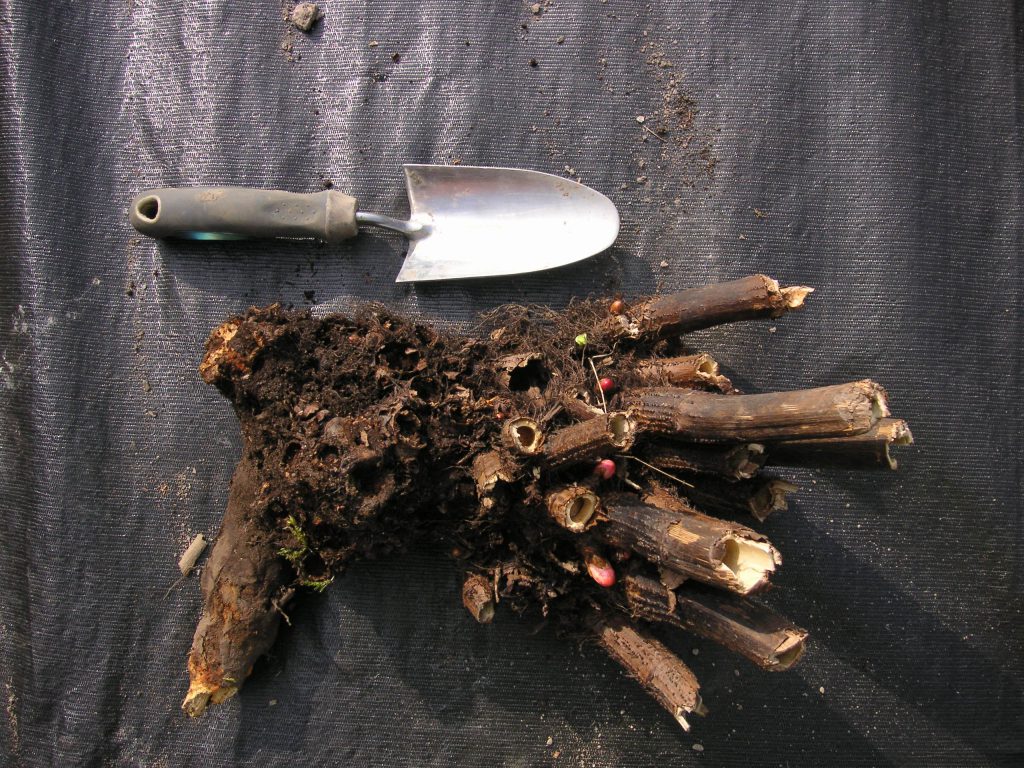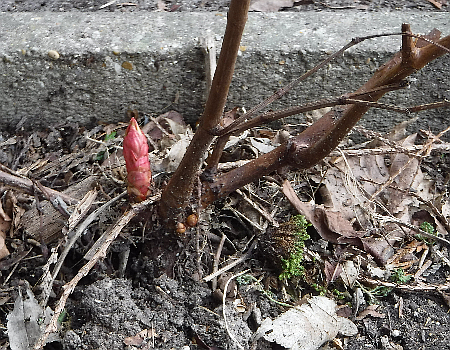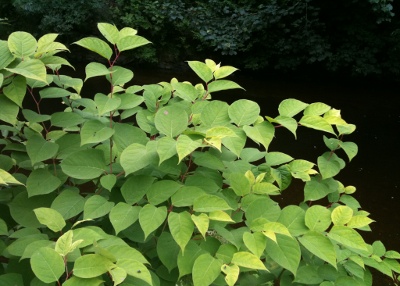How Long can Japanese Knotweed Stay Dormant?
01-03-2019
Last updated 07-03-2023

Japanese knotweed (Fallopia japonica or Reynoutria japonica), which is a member of the dock family, is a rhizomatous perennial plant.
This means that it has evolved a growth and survival strategy to store energy in its root system (rhizomes) rather than in woody branches, like trees and shrubs and the closely related Russian vine, which is a plant that can look like Japanese knotweed.
Can Japanese knotweed lay dormant?
It is a survival strategy of Japanese knotweed for its rhizome/root system to go dormant in unfavourable growing conditions. It has been reported by the UK Environment Agency that periods of dormancy can last as much as 20 years. This allows its aboveground stems to completely die back in the winter. By doing so, Japanese knotweed survives as dormant rhizomes outside of the growing season.
New shoots then appear from the crowns and rhizome buds during the following spring. These produce distinctive branching stems that are bamboo-like, hollow, and covered in purple speckles.
The leaves alternate along each side of the stems, producing an obvious zigzag pattern. The mature leaves are green and roughly heart-shaped with a flattened base (a bit like a shield) and are usually around 12cm long.
Japanese knotweed grows in a variety of habitats across the UK. You can read more about the places where you’re likely to find it in this blog post: Where is Japanese Knotweed Most Likely to Grow?
Although dormant during the winter, the dead stems from previous summer growth often persist and can be easily identifiable amongst other vegetation that has lost its leaves or died back. These stems appear as the leaves fall at the end of autumn, revealing orange/brown canes around 2m tall. These can remain standing for a year or two, unless knocked over by subsequent stems growing amongst them next summer, if they are removed by people or damaged by heavy winds or rain. The dead stems are quite brittle and often end up as fragments scattered amongst the live growth, decomposing slowly over a period of a few years.
The crown buds from which new growth appears in spring are bright pink/red. The shoots that rapidly emerge from these use the stored energy and nutrients in the rhizome system underground.

The rhizomes are connected to the crowns by a fibrous network that spreads deep into the ground (i.e. by as much as 3 metres). The rhizome shoots can vary between 0.5cm to more than 10cm in diameter. They can be snapped relatively easily, revealing a bright orange-coloured centre and can extend 2 metres or more laterally from the crowns.
It was only the female Japanese knotweed plant that was initially introduced to the UK. Therefore the plant rarely spreads by producing viable seed, due to the absence of the male plants’ pollen (further information on how knotweed spreads can be found here: How Japanese Knotweed Spreads). As such, in the UK the plant is spread through rhizome fragments or cut crowns. Rhizome material as small as 0.7 gram has been known to regenerate into new plants. Therefore it is essential that rhizomes are not disturbed and are not spread to uncontaminated areas of your garden. Once the stems have dried out they die and cannot regenerate; however, rhizome fragments in the ground can lay dormant for a long time – reportedly as long as 20 years!
By mid-summer the stems grow to a maximum height of around two to three metres.
Small spikes of white flowers appear very late in the summer (i.e. around late August/September). This is unlike the flowering times of most native UK plants, which appear in spring or early- to mid-summer.
How does Japanese knotweed remain dormant?
Dormancy in some plant species is a mechanism that allows the plant to service difficult or harsh growing conditions such as long term floods or droughts. Essentially, the rhizome/root system shuts down until conditions reappear that are favourable for growth.
How long can knotweed stay dormant?
The Environment Agency has reported that Japanese knotweed can remain dormant in the ground for 20 years.
Can Japanese knotweed come back after 10 years?
Japanese knotweed rhizomes can remain dormant in the ground for 20 years. It is possible, therefore, that if the ground is disturbed after 10 years, dormant rhizomes could be reawakened causing new growth to appear.
If you would like further information on how to identify knotweed during the summer or during the winter when the plant is dormant, there’s a wealth of information available here: How to Identify Japanese Knotweed.



